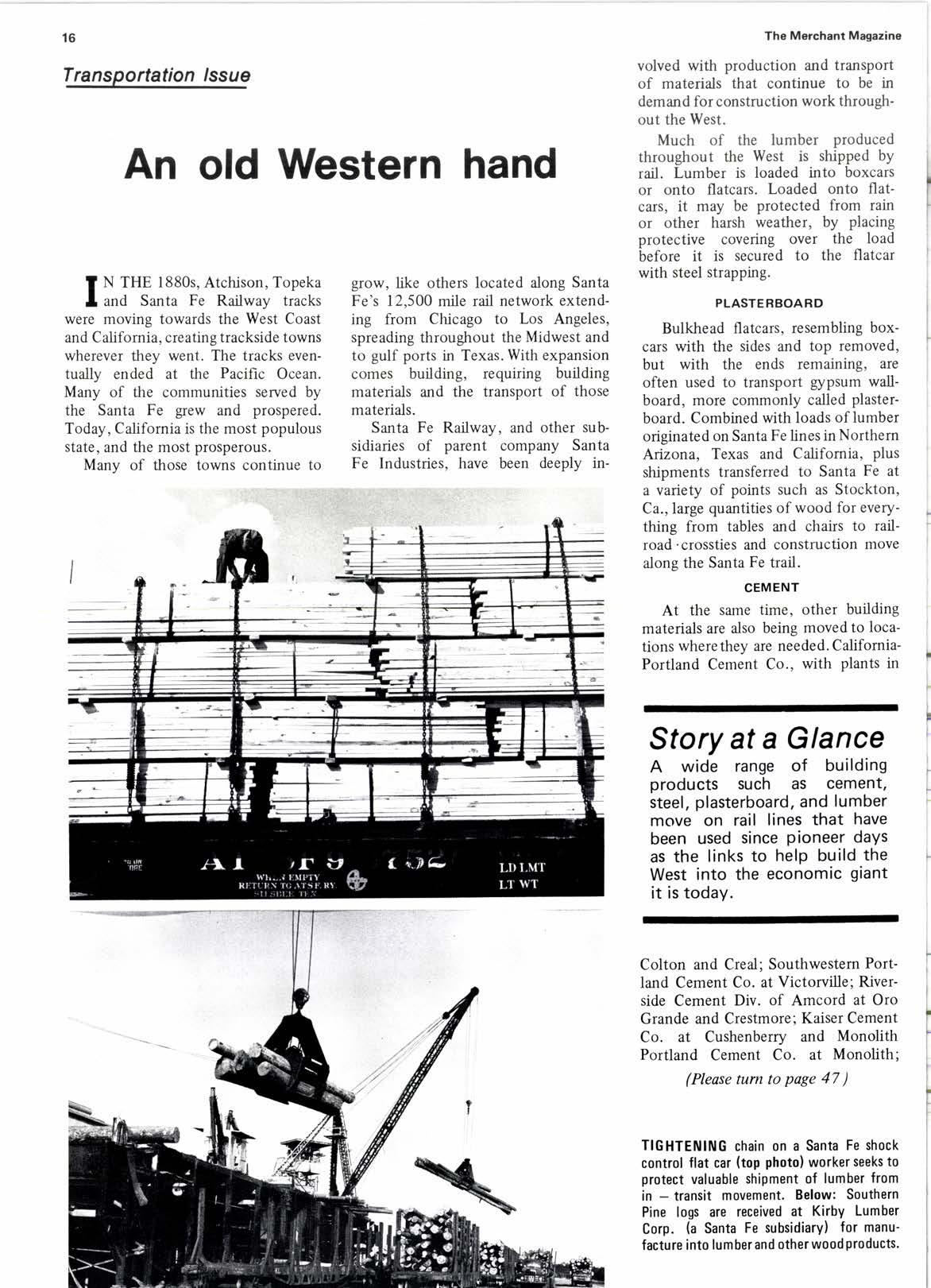
1 minute read
An old Western hand
f N THE 1880s, Atchison, Topeka
I and Santa Fe Railway tracks were moving towards the West Coast and California, creating trackside towns wherever they went. The tracks eventually ended at the Pacific Ocean. Many of the communities sewed by the Santa Fe grew and prospered. Today, Califomia is the most populous state, and the most prosperous.
Many of those towns continue to grow, like others located along Santa Fe's 12,500 mile rail network extending from Chicago to Los Angeles, spreading throughout the Midwest and to gulf ports in Texas. With expansion comes building, requiring building materials and the transport of those materials.
Santa Fe Railway, and other subsidiaries of parent company Santa Fe Industries, have been deeply in- volved with production and transport of materials that continue to be in demand for construction work throughout the West.
Much of the lumber produced throughout the West is shipped bY rail. Lumber is loaded into boxcars or onto flatcars. Loaded onto flatcars, it may be protected from rain or other harsh weather, by placing protective covering over the load before it is secured to the flatcar with steel strapping.
Plasterboard
Bulkhead flatcars, resembling boxcars with the sides and top removed, but with the ends remaining, are often used to transport gypsum wallboard, more commonly called plasterboard. Combined with loads of lumber originated on Santa Fe [nes in Northem Arizona, Texas and Califomia, plus shipments transferred to Santa Fe at a variety of points such as Stockton, Ca., large quantities of wood for every' thing from tables and chairs to railroad'crossties and construction move along the Santa Fe trail.
Cement
At the same time, other building materials are also being moved to locations where they are needed. CalifomiaPortland Cement Co., with plants in
Story at a Glance
A wide range of building products such as cement, steel, plasterboard, and lumber move on rail lines that have been used since pioneer daYs as the links to help build the West into the economic giant it is today.
Colton and Creal; Southwestern Portland Cement Co. at Victorville; Riverside Cement Div. of Amcord at Oro Grande and Crestmore; Kaiser Cement Co. at Cushenberry and Monolith Portland Cement Co. at Monolith; (Please tum to page 47 )
TIGHTEI{|IUG











